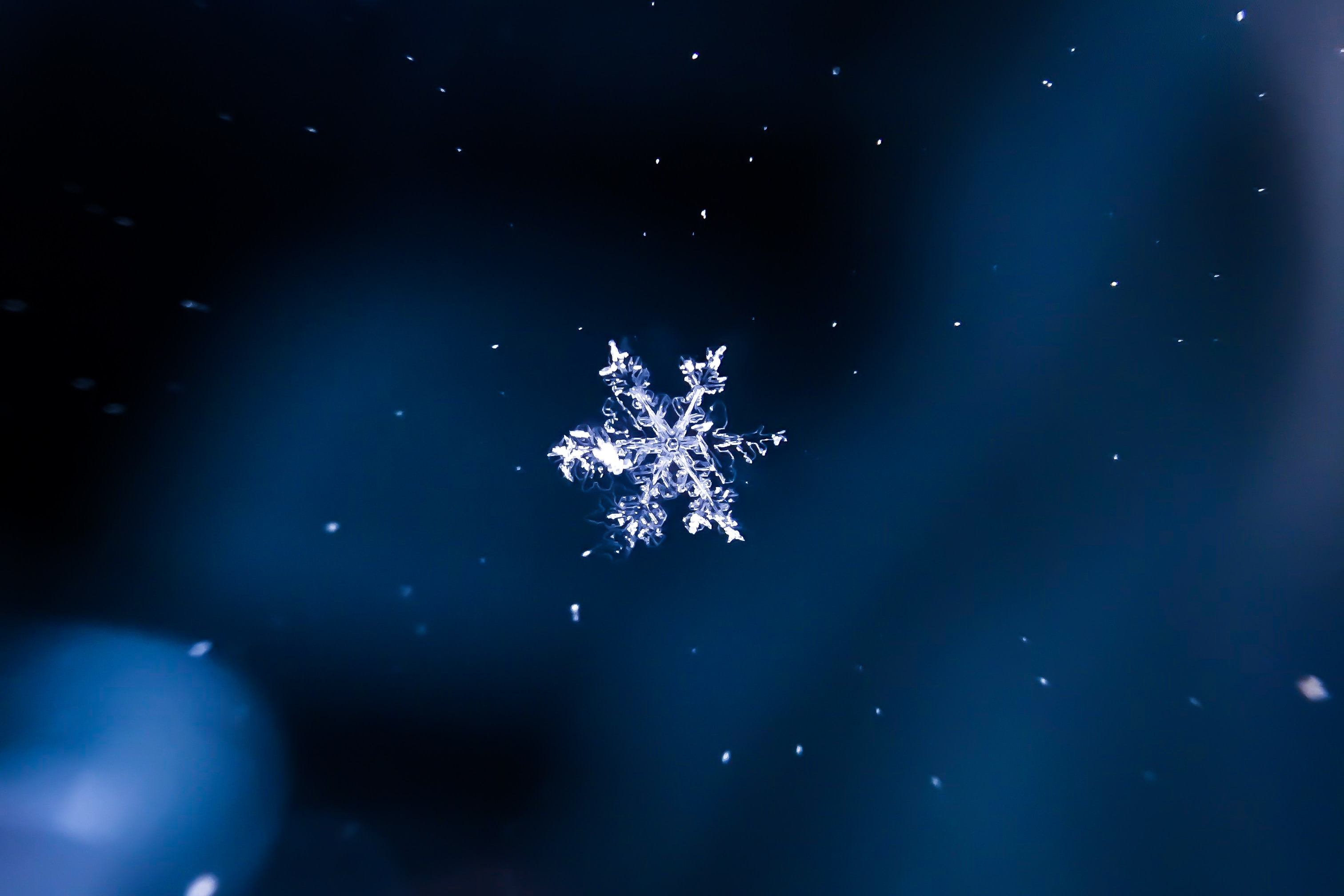Every year, snow is guaranteed to fall in the colder parts of the world. On rare occasions, snow can also fall in areas where it would be unusual. The amount of snowfall varies from year to year.
How Snow is Formed
When the temperature in the air is at or below 32 degrees Fahrenheit, a snow crystal is formed. A snowflake is formed from the absorption of a snow crystal by one another. The more snow crystals which become absorbed, the larger the snowflake. The majority of snowflakes reach a diameter no larger than 1.3 centimeters (.5 inches). In climates that see near-freezing temperatures, light winds, and irregular atmospheric conditions, snowflakes can reach upwards of five centimeters (2 inches) in diameter.
Characteristics of Snow
Snow often carries a white appearance, because visible light is white and snow reflects most of the sunlight, resulting in the white appearance. Snow can be other colors however, such as blue, red, or pink. When light travels through deeper snow, snow crystals absorb more red light, resulting in blue-tinted snow. When snow has a pinkish hue to it, the cause is from algae living in the snow.
When snow is fluffier, often fresh, sound waves are easily absorbed which reduces the sound snow makes when weight is put on it. When snow melts and refreezes, it creates a hard, smooth surface which reflects sound waves and increases the intensity of its sound.
Different Types of Snow
Depending on the region, snowfall will vary.
Snowflakes are single ice crystals and come from one cloud.
Hoarfrost occurs when moisture rapidly changes from vapor to a solid on an object; resulting in ice crystals.
Graupel takes place when cloud droplets fall through freezing clouds but remain a liquid. These then freeze into crystals and can be described as a soft, crumbly snowfall.
Types of Snowfall
Different types of snow are a result of different types of snowfall.
A blizzard is a vicious winter storm that lasts at least three hours and combines freezing temperatures, strong winds, and snow.
Snowstorms are similar to blizzards but are strictly large amounts of snowfall.
Snow flurries resemble snowstorms but are much lighter and last a shorter amount of time.
Snow squalls are shorter than snow flurries but provide more intense snowfall and winds.
Snowbursts are condensed snowstorms. They are very intense and result in a rapid accumulation of snowfall.
A snowdrift is now new snow that is falling, it is existing snow that is on the ground and blown by the wind during times of strong wind.
Snow Cover Variations
Throughout the world, snow covers different pieces of land which can change on a yearly basis.
New snow is new snow which has recently fallen to the ground.
A firn is rounded snow which is tightly packed together and older than one year old.
A neve is often associated with a glacier because it is snow that melts, refreezes, and lasts throughout an entire “full-melt” season.
Perennial snow occurs year after year in the same location.
Powder snow is new, “dry” snow which is fluffy. Skiers and snowboarders often look for this type of snow on the mountain for a good “powder day”.
Snow Formations
In different climates, different types of snow create different formations.
A cornice is an overhanging accumulation of snow and ice which can be found on a ridge or cliff. A classic reference for a cornice can be found in Dr. Seuss’ How the Grinch Stole Christmas.
Ripple marks resemble that of sand. Snow creates ripples on the ground because of the wind.
A snow barchan is created from the wind and results in a horseshoe shape.
Snow rollers are very rare and only occur in perfect conditions. Chunks of snow are displaced by the wind and creates a snowball like effect.
The study of snow by scientists helps to better predict the weather. By studying older snow in glaciers, scientists can reveal vital information about previous climates to predict the future.



You’re in snow…NOW !
LikeLike